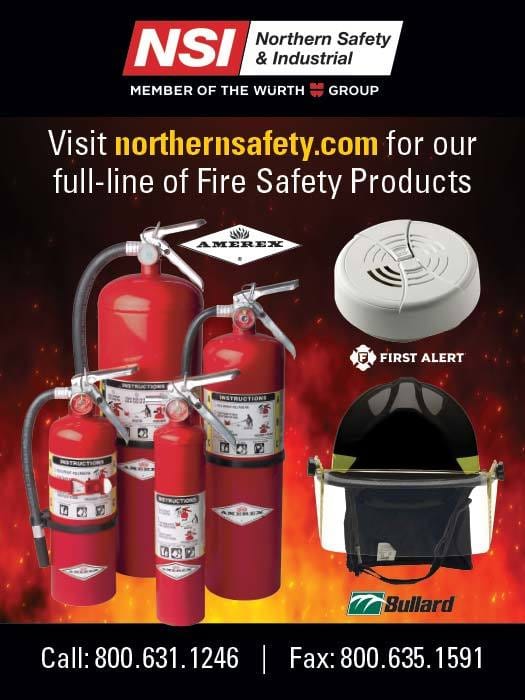safety
TALK

By Randy DeVaul
Let’s clear up testing confusion
Post-incident substance abuse policies do not defy OSHA guidelines
n effective substance abuse testing program safeguards your employees and workplace against injuries and illnesses, or other incidents caused by substance abuse or misuse. With written policies in place, employers can test for post-offers for employment, random, reasonable cause, and post-incident.
Testing reinforces human resource policies toward maintaining a substance-free workplace. It allows you to demonstrate your commitment to employee safety and health through maintaining a safe work environment for employees, contractors, vendors, and visitors. Side benefits include maintaining employee performance, safe interactions with others, and reduced potential of injuries with alert and responsive employees.
Recently, there has been confusion around testing after an incident, with or without injury. In 2016, OSHA released guidance on when testing can be performed, emphasizing that employees were not to be drug tested as a retaliatory action. OSHA maintains that employers cannot retaliate on an employee who has or reports an injury.
OSHA’s first guidance document drew the attention of employee-friendly lawyers who immediately began threatening lawsuits against companies who were simply following safety and human resource substance abuse policies. From those threats, employers began changing their policies to stop drug testing after an injury for fear of being sued. This was a huge mistake.
Employers with a consistently applied substance abuse policy were reduced to subjective, pick-and-choose options for testing or just stopped testing altogether. That caused more confusion regarding drug testing. It also subjected employers to more egregious lawsuits because they lost their consistency and began second-guessing.
There was such confusion that OSHA came out in October 2018 with a clarification of its 2016 guidance. Unfortunately, employers continue to question it, creating high risk for employers on being sued by misapplication of the policy or subjective reviews for testing.
A
Post-incident testing – clarity, once and for all
The October 10, 2018, interpretation letter by OSHA states: “…most instances of workplace drug testing are permissible under § 1904.35(b)(1)(iv).

Photo: blueshot / iStock / Getty Images Plus via Getty Images.
Examples of permissible drug testing include:
• Random drug testing.
• Drug testing unrelated to the reporting of a work-related injury or illness.
• Drug testing under a state workers’ compensation law.
• Drug testing under other federal law, such as a U.S. Department of Transportation rule.
• Drug testing to evaluate the root cause of a workplace incident that harmed or could have harmed employees. If the employer chooses to use drug testing to investigate the incident, the employer should test all employees whose conduct could have contributed to the incident, not just employees who reported injuries.”
So, what changed regarding an employer’s ability to drug test after an incident? Nothing! If you are an employer who uses drug testing as a means to retaliate against an employee because of reporting an injury or being injured, you deserve whatever OSHA gives you. There is no other way to describe those actions other than stupid and potentially very expensive.
So, when can an employee be tested after an incident? The answer is clear – immediately following the incident in which the employee caused or contributed to the incident, with or without injury.
Also, whether to drug test post-incident should never be associated with a dollar value of property damage. An employee performing in a manner that causes any level of property damage should be subject to testing. Just being lucky and not hitting the arbitrary dollar value does not mean that employee should not be tested, actions investigated and reviewed, and, perhaps, either re-trained or open to disciplinary action for not following the training or the proper procedures. For clarity, you never discipline an employee for getting injured. The discipline centers on the employee’s performance that may have caused the injury.
Here are examples to make this point clear.
• An employee operating a forklift strikes a support column. There was no injury and only minor damage to the column. The employee should be drug tested for failing to operate the forklift properly.
• A mobile equipment operator strikes another vehicle. An investigation shows the operator was traveling too fast and the operator of the struck vehicle was parked in an active traffic lane. Both employees contributed to the event; both are tested.
• An employee walking in the designated walkway is struck by a piece of metal that vibrated off the air handler in the ceiling, causing a laceration. The employee did nothing to contribute to the injury; testing would not be required.
Summary
OSHA’s substance abuse testing guidelines is to prevent employer retaliation against an employee who reports or has an injury. A valid and consistently applied substance abuse policy is not the target of OSHA’s guidance.
If you changed or retracted your substance abuse policy because of misinterpreting OSHA’s guidance, review it immediately and change it. Of course, any change requires communicating it to your employees so they know the expectations.
If you have a properly constructed substance abuse policy, use it!
Randy DeVaul (safetypro1158@gmail.com) is an author, writer, and experienced safety professional in OSHA- and MSHA-regulated industries and in workers' compensation best practices. Randy conducts webinars regularly on safety/health and workers’ compensation topics. He is the founder of MOST (Mine/Occupational Safety Training), creator of the 'Safe at Home' series, and Rapid Response CPR (www.rapidresponsecpr.com), providing BLS/emergency response courses for healthcare professionals, first responders, and response teams. Randy resides in Central Florida. Comments are always welcome.

